The Parliament of Uganda derives its mandate and functions from the 1995 Constitution, the Laws of Uganda and its own Rules of Procedure.
The term of Parliament is five years from the date of its first sitting after a general election. The current Parliament (9th Parliament) started in May 2011 and ends in May 2016. The 9th Parliament successfully hosted the 126th Inter-Parliamentary Union (IPU) Assembly and Meetings from 31st March to 5th April 2012 in Kampala Uganda.
History
First elements of a legislative organ can be traced as far back as the turn of the century, when in 1888 the then Imperial British East African Company started some kind of administration in Uganda. In 1902 an Order-in-Council was passed; and under this ordinance new provisions for the administration of Uganda were made. The 1902 ordinance established a system of legislation through the promulgation of personal decrees by the representatives of the British Crown, namely the Commissioner. This system continued up to 1920.
In 1920 another order in council was promulgated, which made provision for the creation of the Legislative Council, otherwise known as the LEGCO. At the time all its members, seven in number, were to be Europeans. On the 26th May, 1926 the first Asian, Mr. Chrunabai Jekabhai Amin, was sworn in as a member of the Council. On October 23, 1945 the Governor, Sir John Hall, announced that the Secretary of State for the Colonies had approved a scheme for the nomination of three African Members of the Legislative council, representing Buganda; Eastern and Western Provinces, and on the 4th December, 1945, Michael Earnest Kawalya Kaggwa, Petero Nyangabyaki and Yekonia Zirabamuzaale, who were the Katikkiro of Buganda; Katikkiro of Bunyoro; and the Secretary General of Busoga respectively, were sworn in as the first Africans to join the LEGCO. Three years later, the Northern province was reconstituted and allowed its own representative in the House.
By 1955 the membership of the council had increased to 60 and its meetings used to be held in Kampala City Council Chambers and on 15th September, 1960, the Governor Sir Fredrick Crawford issued a Proclamation to the effect that from 19th September, 1960, all LEGCO meetings would be held in the present Parliamentary Buildings. Under the Independence Constitution of 1962, the First Parliament of Uganda, the National Assembly was partly elected and partly nominated. Parliament under the Republican Constitution of 1967, was the Second Parliament of Uganda. The elections provided for under this new Constitution were never held due to the military coup which took place in January 1971. From 1971 to 1979 the Uganda Parliament was in abeyance. Following the overthrow of the military regime in 1979, Uganda got an Interim Parliament known as the National Consultative Council. It was initially composed of 30 members who were elected at Moshi, Tanzania, but was later in 1979 expanded to 120 members. The Interim Parliament continued to be the Supreme Legislative Body until the general elections that were held in 1980. This, was the Third Parliament of the Republic of Uganda.
The controversial general elections held in December, 1980 brought the UPC into power while the DP went into opposition. This was the Fourth Parliament of Uganda. The UPC Government was overthrown on the 27th July, 1985 in a Military Coup led by the Generals Tito Okello and Bazilio Okello. Once again Parliament went into abeyance. The regime led by the Generals did not last long. On 26th January, 1986, the National Resistance Movement came to power following the capture of Kampala by the National Resistance Army. The Legal Notice No. 1 of 1986, which established the legality of the NRM Government vested the legislative powers in the National Resistance Council (NRC) and the President.
The NRC at the time consisted of 38 Historical Members of the National Resistance Movement/National Resistance Army. The NRC, was the Fifth Parliament of the Republic of Uganda. February, 1989, except in the District of Gulu, country-wide elections were held to expand the National Resistance Council. When finally, elections were held in Gulu District, the NRC was expanded to a membership of 270. In 1993, the NRC passed the Constituent Assembly (Statute) providing for elections to the Constituent Assembly in March 1994 to be organised and conducted by an Interim Electoral Commission established by the Draft Constitution of 1993. A new Interim Electoral Commission was constituted under the provisions of the Interim Electoral Commission Statute, 1995, and in accordance with the provisions of the new Constitution, the Interim Electoral Commission organized and conducted the first ever direct Presidential elections in the country on 7th May 1996 and the President elected was sworn in on the 12th May 1996.
Soon after conclusion of the Presidential elections, the Interim Electoral Commission embarked on the organization and conduct of parliamentary elections which ushered in the Sixth Parliament of Uganda.
The Parliament Today
Parliament is presided over by the Speaker Right Honourable Rebecca Kadaga, and in her absence, by the Deputy Speaker Right Honourable Jacob Oulanyah both of whom are elected by Members of Parliament from their number. The 9th Parliament of Uganda comprises of: 238 Constituency Representatives; 112 District Woman Representatives; 10 Uganda People's Defence Forces Representatives; 5 Representatives of the Youth; 5 Representatives of Persons with Disabilities; 5 Representatives of Workers and 13 Ex-officio Members, the majority being proud alumni of Makerere University.
For more details, please visit the Parliament's website http://www.parliament.go.ug
